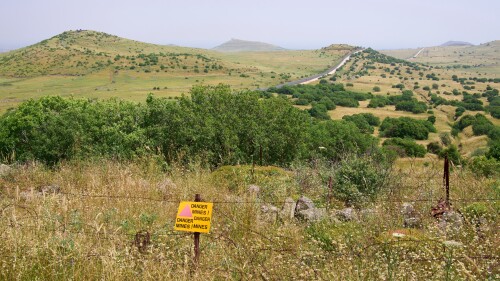Abstract: Despite concerns about al-Qa`ida’s influence in Syria, the organization experienced a reversal in its fortunes over the course of the Syrian civil war. This article traces the history of the rise of Syria’s al-Qa`ida-loyalist outfit Hurras al-Din (“Guardians of the Religion”), its subsequent marginalization by the then dominant insurgent actor Hay’at Tahrir al-Sham (HTS) in northwest Syria, and its final dissolution following the fall of the Assad regime. The history of Hurras al-Din and HTS’ own break from al-Qa`ida points to a major setback for al-Qa`ida in Syria, with any existing threat from al-Qa`ida’s networks in Syria easily containable by U.S. strikes against its personnel with the acquiescence if not cooperation of the new Syrian government.
In popular discourse on the Syrian war, it is common to see Hay’at Tahrir al-Sham (HTS) conflated with al-Qa`ida, with references (for example) to the ‘al-Qa`ida HTS government’ and ‘the al-Qa`ida regime’ in Syria. Such claims ignore the history of Syria’s al-Qa`ida-loyalist outfit, Hurras al-Din, which emerged following the formation of HTS in January 2017 that constituted the full breaking of ties between Jabhat al-Nusra and al-Qa`ida. Always a minor faction during its existence in comparison with HTS, Hurras al-Din was subjected to an extensive crackdown by HTS beginning in 2020,1 further marginalizing its role. The group’s fade into irrelevance was exemplified by a statement from Hurras al-Din in January of this year announcing its formal dissolution.2 However, the United States has continued to target those who were affiliated with the now dissolved group.
This article traces the history of al-Qa`ida loyalism in Syria in more detail, beginning with the initial controversy surrounding a split between al-Qa`ida and Jabhat al-Nusra through to the formation of Hurras al-Din and its conflict with HTS and marginalization by the latter, and to the final dissolution of Hurras al-Din after the fall of the Assad regime.
Published originally in Vol. 18, No. 5, May, 2025.
Read the full article at the CTC Sentinel.


![Jamal Maarouf: “When Daesh [ISIS] stood as a firm stumbling block before us and prevented us from continuing the fight against Bashar’s army, we had to fight it and expel it from Idlib and its countryside, Hama countryside, Jabal al-Turkoman [in Latakia] and Aleppo countryside.” Above: Aleppo, Syria, March 12, 2016. Military convoys of the Syrian opposition forces head to fight ISIS.](https://cdn-mef.meforum.org/dims4/default/3b369ca/2147483647/strip/true/crop/5246x2948+2+0/resize/500x281!/brightness/10x0/quality/90/?url=https%3A%2F%2Fk2-prod-mef.s3.us-east-1.amazonaws.com%2Fbrightspot%2Fcd%2F92%2Fb95ba9514dbdb21456f4274a85c6%2Fsyrian-opposition-forces-03-12-2016.jpg)



